Phil Hardman has some night-timely hunting advice for newcomers
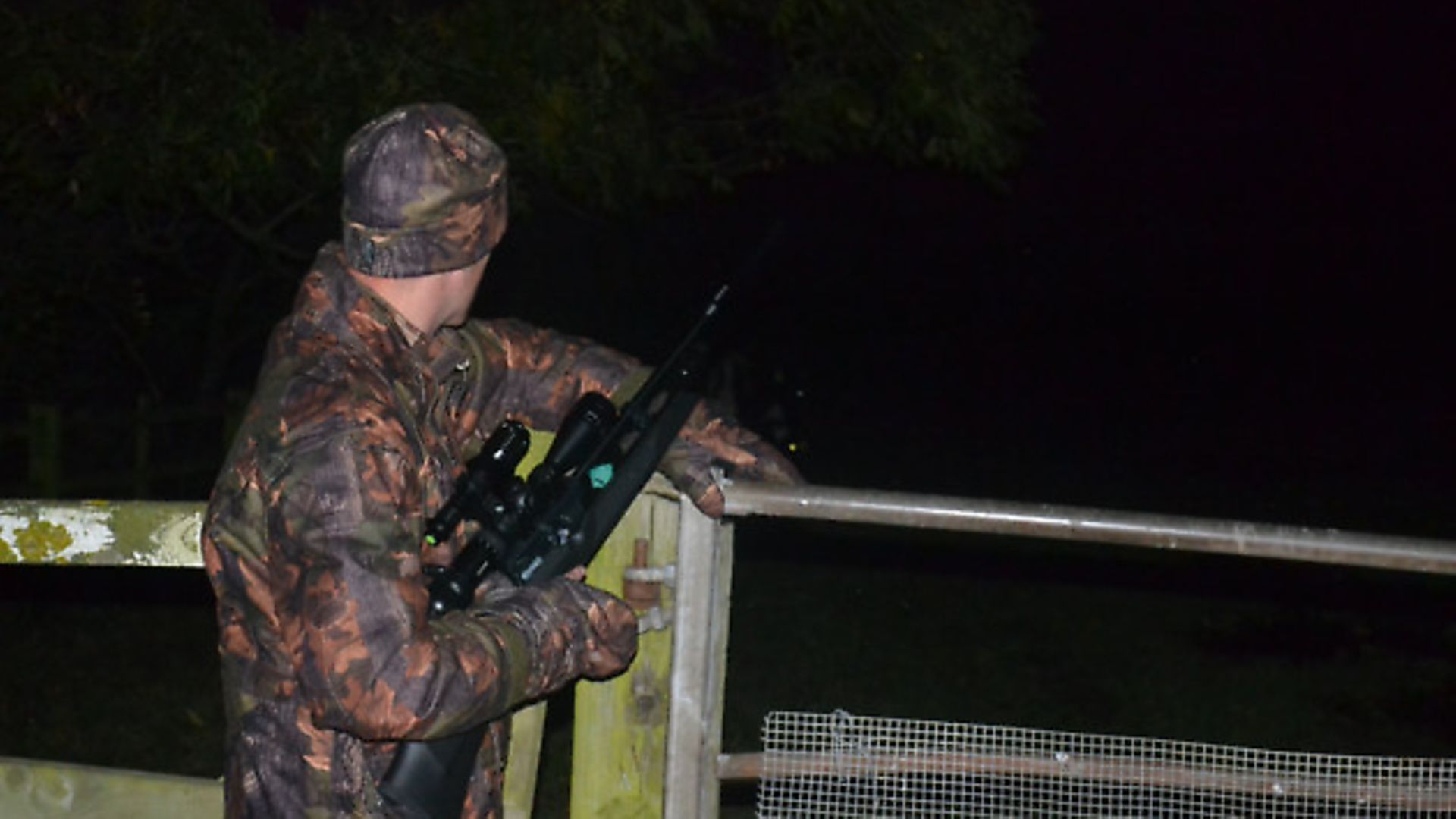 credit: Archant
credit: Archant
Most newcomers to the sport tend to start out hunting during daylight hours, but eventually, the lure of night hunting becomes stronger and stronger. So I thought I’d have a closer look at what it entails, why we do i, and the best techniques to employ on after-dark forays into the field.
For me, it was rabbit hunting at dusk that really made me want to extend my hunting trips into the night, because it quickly became obvious that the later it got, the more rabbit activity there was.
Back then, lamping was a complicated business – proper dedicated lamping equipment was years away. Huge motorbike batteries were needed to power headlights from cars in order to get the sort of brightness you needed, and the batteries tended to leak acid all over your clothes, dissolving them as you went. You also needed two people, and I much prefer to hunt alone, so it wasn’t until the advent of the dedicated ‘gunlamp’ that I really got into lamping. This enabled me to mount a light above my scope and go out alone, skulking around in the shadows to my heart’s content.
Lamping, using a light source to find and target your quarry in the dark, could mean anything from a huge hand-held lamp to a small LED torch. The important thing is the light must be bright enough to allow you to spot the reflections from your quarry’s eyes at a distance of 70 to 100 yards, before you move in closer to take the shot.
I wouldn’t use any form of lamp that didn’t fully illuminate my target at 50 yards or so, mainly because in the dark, rabbits and hares can look similar. The more light you have, the easier it is to identify what is in your sights.
If you choose a hand-held lamp, you will need a ‘lamp man’ to carry it. He or she controls the stalk and the shooter follows their directions. If you go it alone, with a rifle-mounted scope, you’re both lamp man and shooter, but the techniques are the same.
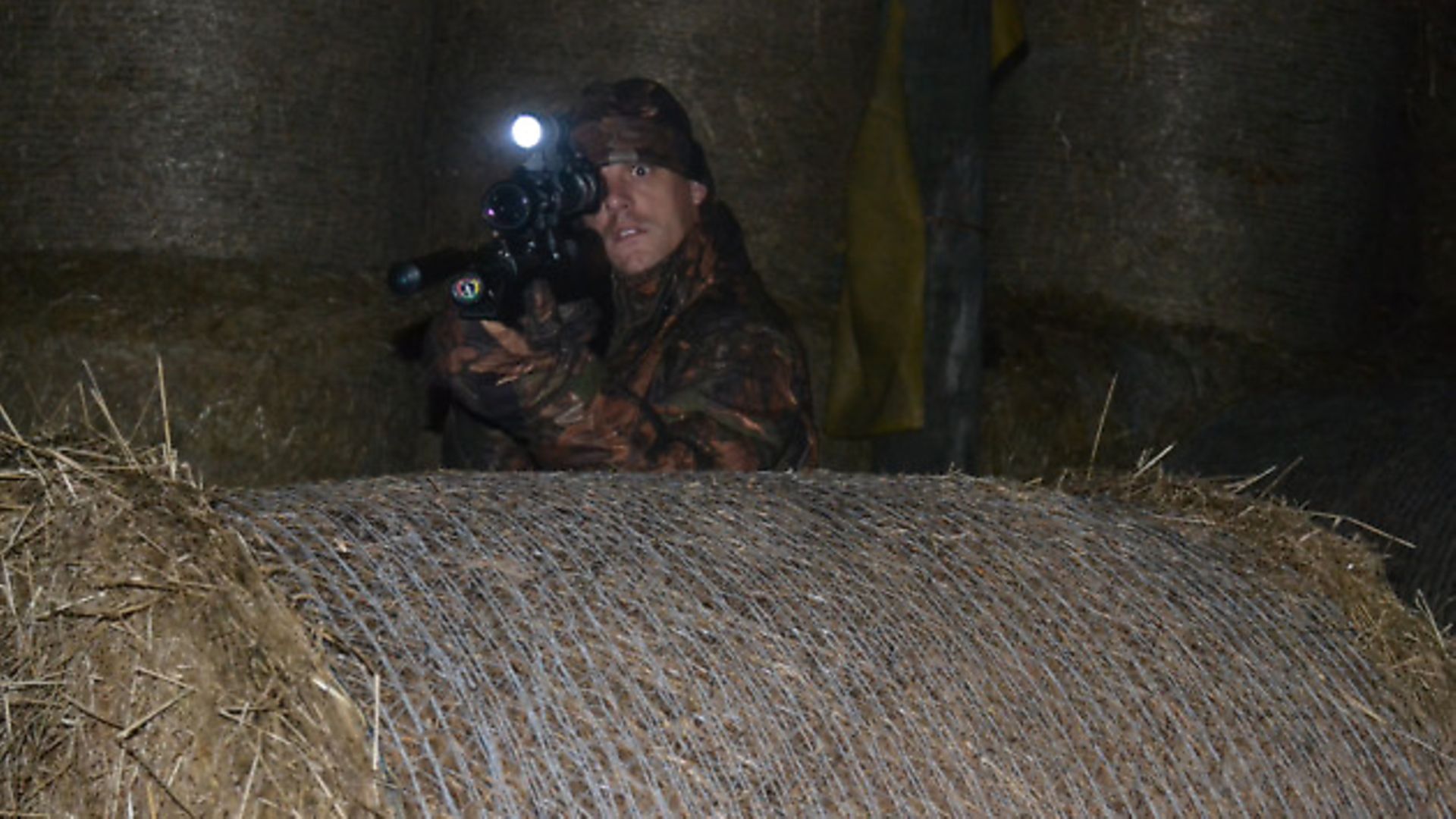 credit: Archant
credit: Archant
Tips and tactics
After dark, rabbits use the cover of darkness to move further away from the warren and out into the areas of the fields where the best food is. You want to allow them enough time after dusk to venture out before you strike. I found that a few hours is about perfect. Move along the hedge line, or wherever the warren is, thereby blocking the rabbits’ escape route and, as you move along the edge of the field, scan with the lamp, starting nearest the edge of the field, and sweep outward into the field.
Any rabbits nearby will either do nothing – in which case congratulations, your quarry is not yet lamp-shy – or they will ‘clap’, meaning they hunker down as flat as they can, trying to camouflage themselves, often using small, pre-dug ‘scrapes’ in the ground to lie in.
If they’re within range, you’re free to take the shot, which I would recommend is taken from the kneeling stance, if possible. If they’re still out of range, or you’re confident you can move closer, then do so. The lamp man decides when you’re as close as you’re going to get, and when it’s time for the shot.
One thing to note, and it’s an important point, is that ranges at night appear greater than they really are. What looks like a rabbit 35 yards away could be closer to 25 yards, and this needs to be kept in mind. I have lost many a rabbit over the years because I sent the shot sailing harmlessly over its head due to over-estimating the distance.
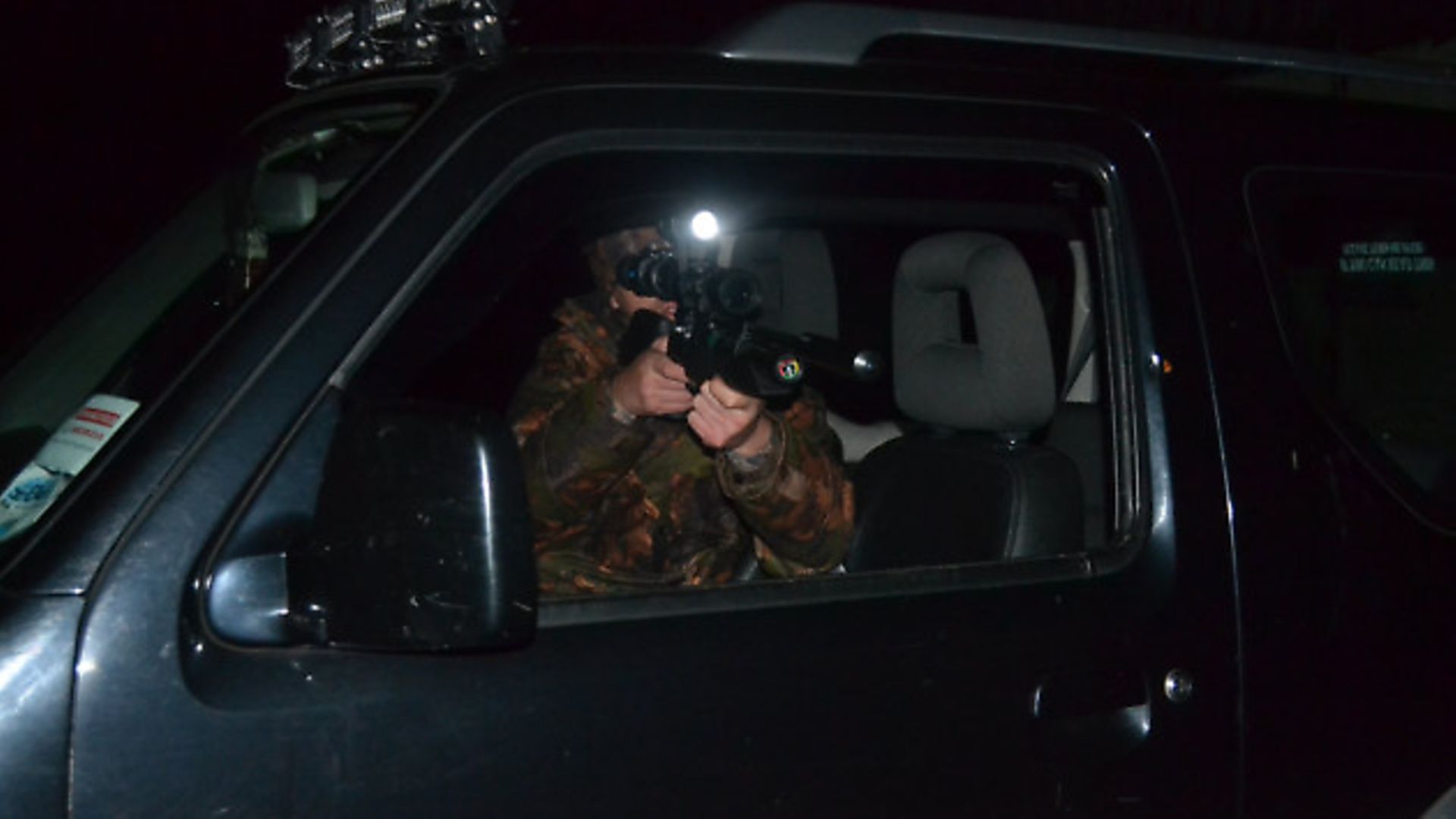 credit: Archant
credit: Archant
Rat-shooting
Rat-shooting with a lamp is similar, although the ranges tend to be short and they’re a lot less likely to sit still while you take a shot. You target rats mainly around barns and in farmyards. You can choose between either sitting and overlooking a likely feeding spot or well-used run, or walking around to scan the sheds and barn.
Once caught in a lamp’s beam, they have a habit of sitting still for a split second, before scurrying a few feet and then pausing again, only to move off just as you’re about to pull the trigger. It can be frustrating. I actually decided the lamp wasn’t working well enough for ratting, which brings us to our next technique.
Night vision
 credit: Archant
credit: Archant
When I first started hunting with night-vision, there was only one real option – first generation (gen 1) Russian image intensifiers. These work by multiplying the available light and creating an image. They’ll give a reasonable picture as a monocular, using just the moonlight and stars, but for shooting or using them as an add-on, they need a boost in the form of infrared illumination. Think of this simply as lamping, with an invisible beam of light, which the NV device allows us to see.
These days, there are all kinds of ready-made, professional, night-vision options, and for very reasonable prices, but by far and away the most popular used for airgunning today is the digital night-vision device.
Unlike gen 1 image intensifiers, these are next to useless without IR, and they need a lot more of it, but they do have advantages. They use a CCD chip that can see infrared light, but which cannot be harmed by over-exposure to light, like a gen 1 system. That means they can be used in daylight without damage – this would burn out the tube in a conventional gen 1 image intensifier.
This is extremely helpful for zeroing your rifle with a digital NV scope because doing it at night can be really difficult. One area where I find digital NV lacking is in the depth of field, meaning that judging distances is harder than with any other system. They display an extremely ‘flat’ black and white image on a screen in front of your eyes, and compared to gen 1, which you seem to look ‘through’, things can appear much more confusing until you become used to them.
First foray
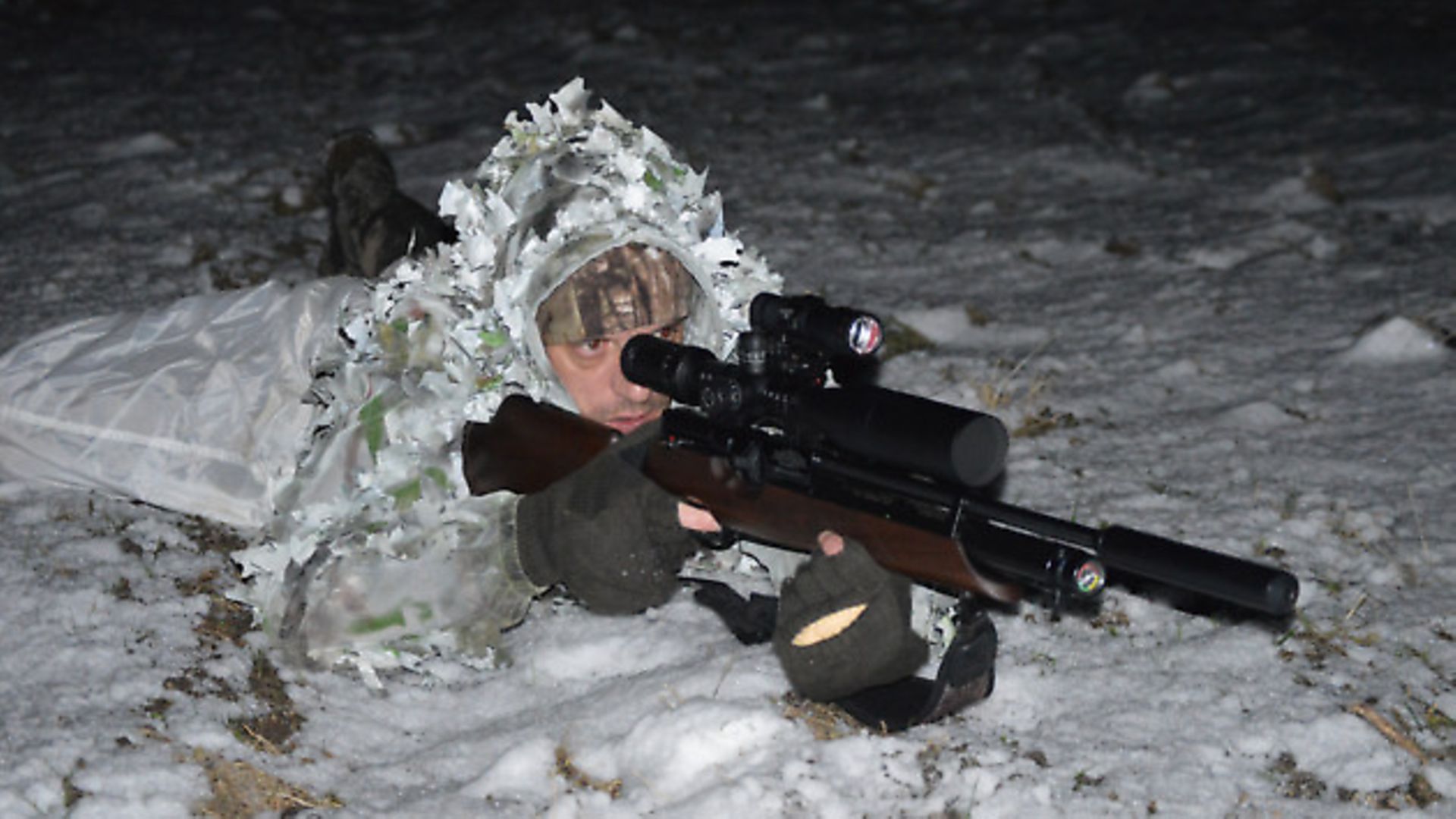 credit: Archant
credit: Archant
My first foray into night-vision was with a DIY, scope-mounted, rear add-on, gen 1 NV monocular, which attached to the rear of my scope by using a piece of plumber’s pipe, a jubilee clip and a lot of electricians’ tape. I used a Tracer Mini scope-mounted gun lamp with a piece of IR filter taped to the front, to convert the light to infrared. It was very Heath Robinson, but it worked extremely effectively for rat shooting. In 10 minutes of my maiden trip, I was hooked.
Viewing creatures after dark, without them knowing you are there, is an other-worldly experience. No longer was I an intrusive visitor to the night, I was part of it. Rats don’t scurry around like they do when lamping them – they walk rather slowly, sometimes plodding along without a care in the world. They will sit still, feed, clean themselves and even mate out in the open, which means you have all the time in the world to get a shot at them.
You’re no longer rushed and so you become a lot more accurate, and because they are much more settled, a shot doesn’t spook the rest as badly either, so your bags increase by a massive amount. I tend to use NV exclusively these days, although I do sometimes still venture out with a lamp if I fancy a change. I still find lamping a very effective way of putting rabbits in the bag, so don’t go thinking you need the latest technology in order to be able to enjoy night hunting.
Be aware
Whichever technique you go for, there are a few things to be aware of before you venture out after dark. Firstly, the terrain at night can be a pitfall of dangerous obstacles compared to the daytime. Even a simple rock that you hadn’t seen can result in an ankle sprain or worse. Make sure you carry a mobile phone and that its battery is fully charged, and tell someone where you’re going.
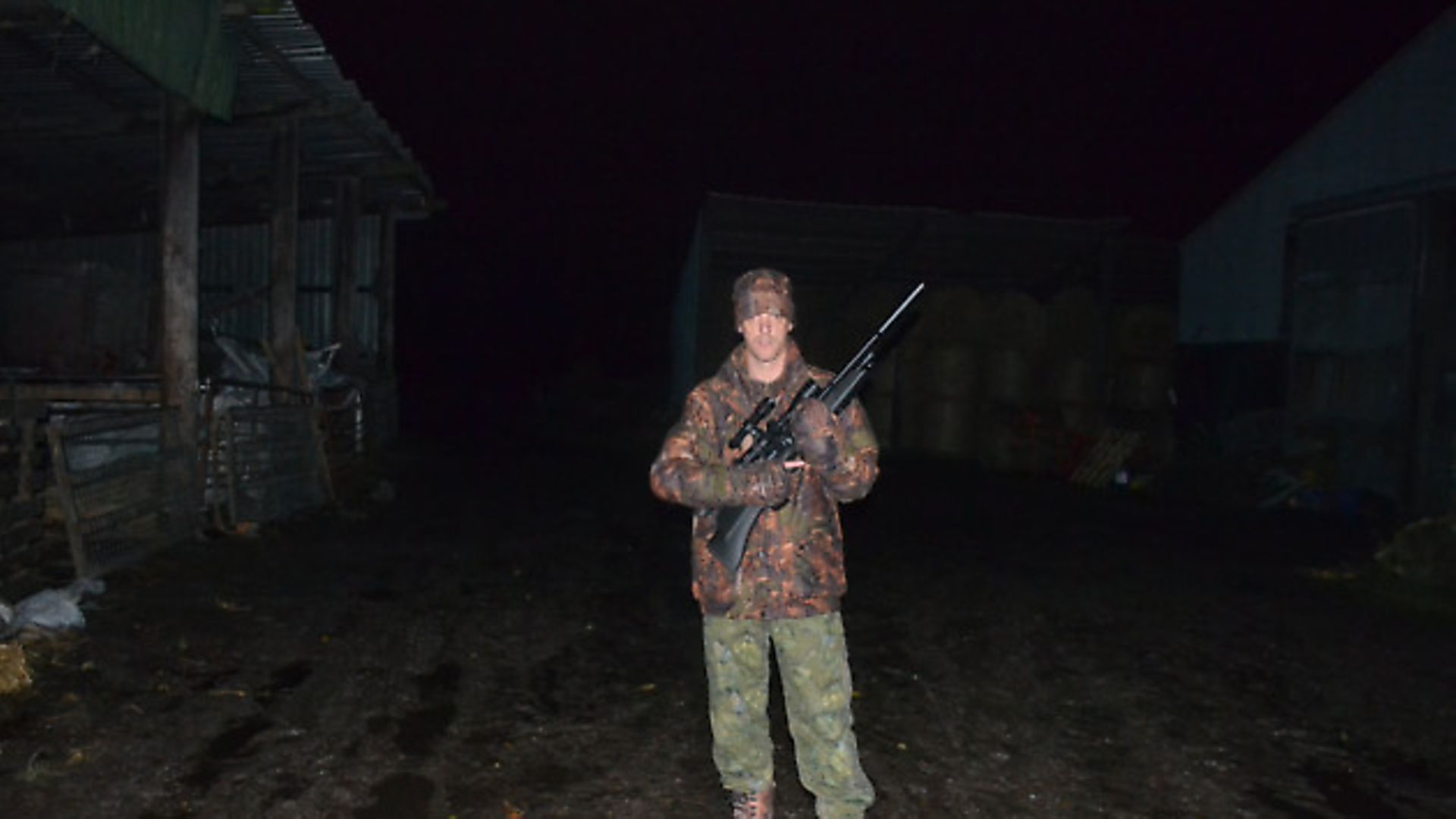 credit: Archant
credit: Archant
On two ocsasions, before the arrival of mobile phones, I found myself in a situation that could have been easily sorted these days. Once, I fell over a fence and twisted my ankle, which instantly swelled to twice its normal size and made walking absolute agony. I had to crawl home, practically, and although I lived a mere 400 yards away from where I had been shooting, it took me an hour in near freezing temperatures.
The second time was when I stepped on a six-inch nail in the farmyard. It penetrated my foot, clean through. I didn’t have a phone and had to hobble home with a Wellington boot rapidly filling with blood.I dread to think what might have happened if I broke an ankle or something when I have been out shooting in temperatures down to minus 11 degrees.
Do a recce and stay warm
The best thing to do is to recce the land before you go out after dark. Make sure you know every fence and gate, the distances between them, whether there are gullies to cross, ditches to negotiate etc. Any obstacle needs to be noted in daylight and remembered, because in the dark the land will look very different.
Lastly, make sure you stay warm. Temperatures can plummet once the sun goes down, and being exposed to it if you’re tired often means you cannot feel just how cold it is. This is what I find most scary, having experienced it myself.
When you first go out, it’ll feel nippy, then maybe freezing, but eventually you will find it doesn’t feel cold anymore, and shivering will cease. You might even feel quite warm, so you’ll have no problem hunting and despite it getting very late, you’ll feel perfectly fine to stay out.
Eventually, you will feel so warm and comfortable that you will start to feel sleepy, and the hay bale you’re sitting on will feel very comfortable. You won’t notice that ice has formed on your glass lenses, or that the air has become so cold that it is as dry as a bone. All you will think about is how nice it would be to go to sleep, but if you do, you may never wake up!
My experience of this came on a night when I almost did lie down, just to close my eyes for half an hour. It turned out that the overnight low was minus 15. I was experiencing the onset of hypothermia, so I now realise just how deadly it is.
Get wrapped up in decent winter clothes, make sure you’re not out for prolonged periods, and if temperatures drop too severely ask yourself if it’s really worth the risk for a few rats or rabbits.
Night hunting is a fantastic sport – just be sensible, do your homework, take no chances and you’ll love it as much as I do.
____________________
You may also like:
Lamping review: Tracer Ledray F600
Hunting journal: Mick Garvey goes rat hunting
Review: Nite-Site Mountable Rangefinder